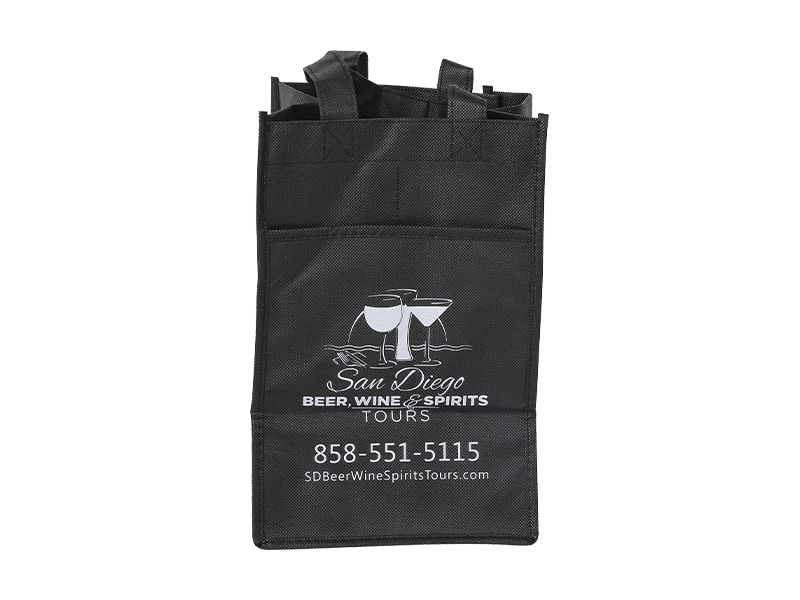Improving the moisture resistance of
print packaging nonwoven bag involves taking measures to protect the bags from moisture and enhance their ability to repel or resist water. Here are some steps to help improve the moisture resistance of nonwoven bags:
Choose Water-Resistant Nonwoven Material:
Start by selecting nonwoven material that has inherent water-resistant properties. Some nonwoven fabrics are manufactured with hydrophobic characteristics, which naturally repel water. These materials are a good foundation for moisture-resistant bags.
Apply Water-Repellent Coatings:
Apply water-repellent coatings or treatments to the nonwoven bags. These coatings create a barrier that prevents water from being absorbed by the fabric. Silicon-based treatments, for example, can make the bags more water-resistant.
Use Laminated Nonwoven Material:
Laminated nonwoven material consists of multiple layers, with one layer often being a water-resistant film. Using laminated material can significantly enhance the moisture resistance of the bags.

Seal Seams and Stitching:
Pay special attention to the seams and stitching on the bags, as these can be entry points for moisture. Ensure that the seams are sealed or reinforced to prevent water from seeping through.
Zipper or Closure:
If the bags have closures like zippers, ensure that these components are also water-resistant or have protective flaps to keep moisture out.
Design with Overlapping Flaps:
Consider incorporating design elements like overlapping flaps or folds that create a protective barrier over the bag's opening. This added layer can help keep moisture from entering.
Proper Storage and Handling:
Store and handle the bags in a dry environment. Avoid storing them in areas prone to moisture or humidity, which can compromise their water resistance.
Regular Maintenance:
Periodically inspect the bags for any signs of wear or damage that may affect their moisture resistance. Promptly repair or replace damaged bags.
Cleaning and Drying:
If the bags become wet or soiled, clean them according to the manufacturer's guidelines and ensure they are thoroughly dried before storage. Damp bags should be fully dried to prevent mold and maintain their water resistance.
Test Water Resistance:
Conduct water resistance tests or seek products that are tested and certified for their moisture resistance. This can provide assurance that the bags meet your specific requirements.
Educate Users:
If the bags are used by consumers, provide information on their moisture-resistant features in user instructions. This helps users understand how to maintain the bags' water resistance.
Consider the Bag's Intended Use:
The level of water resistance required may vary depending on the bag's intended use. Consider the specific application when selecting materials and treatments.
Improving the moisture resistance of print packaging nonwoven bags is important for protecting their contents and ensuring their durability, especially in wet or humid conditions. Working with reputable suppliers and manufacturers who provide water-resistant options and staying informed about the specific requirements of your application are key to achieving effective moisture resistance.


